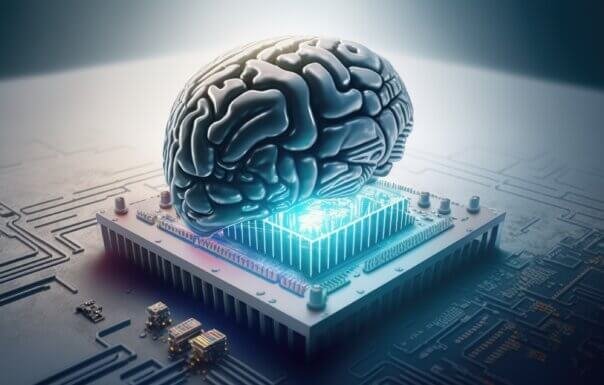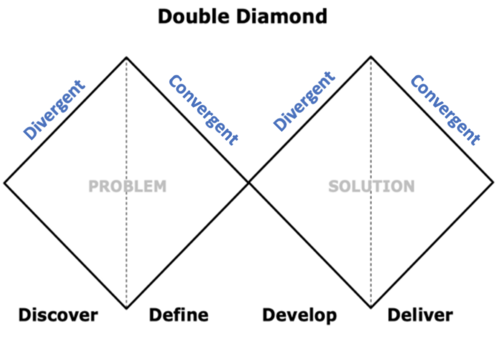It’s Time to embrace the inhuman advantage of alternative intelligence
One of the striking things about the current conversation about AI is how negative it tends to be. AI is cast as the rampaging monster, the enemy of humanity, the destroyer of jobs or even a threat to the hallowed idea of human creativity itself. I guess that’s not surprising as it certainly makes a more interesting news story than talking about things like calm, constructive, collaboration. We love a bit of threat and conflict – just look at how immigration is written about and talked about in this country.
Yul Brynner is brilliant as the archetypal malevolent robot in Westworld. AI is not a malevolent robot
However, far from being a hostile invasion of malevolent robots ‘coming over here taking our jobs’ – the arrival of AI is exciting for the things that it can do but humans cannot – or tend to do quite badly. That’s not just the speed at which it can process and analyse vast amounts of structured and unstructured data. It’s more in the fact that AI can explore a topic or data set without the constraints of its existing experience, expectations and biases (our human baggage). AI can look with fresh eyes where an experienced human analyst can easily be swayed by the first piece of evidence that confirms what their expectations were to begin with. AI sees the world in a different way to us. Its intelligence is real, and perhaps better described as alternative, rather than artificial.
For me, AI data analysis tools can be like having a super smart and confident intern working with you. They are hungry, energetic and open minded – which can really complement the years of wisdom and experience relating to a specific area that might be available from other people on the team. With more life experience comes a greater tendency to discount things that are at odds with our expectations. AI can push against this to keep the agenda fresher and more progressive – providing plenty of creativity and cognitive stimulation when it’s needed.
Interestingly, this is something that has been highlighted in a recent study by Dr Erik Guzik at The University of Montana (UM) where AI was found to match the top 1% of human thinkers in a standard test for human creativity. In the study, Chat GPT’s responses to the test were compared with 24 other students on the UM entrepreneurship and personal finance course, and a further 2,700 students who took the same test in 2016. AI was not only placed in the top 1 % for the number of ideas that it generated, but also for the originality of those ideas.
This ability makes a lot of practical sense when you apply it to something like the classic double-diamond design process. The nature of AI lends itself to the divergent phases of the process – creating a wider frame of reference. This dovetails with the human tendency to filter and rationalise ideas that becomes more important in the subsequent convergent phases. The two intelligences naturally complement each-other and create a new division of labour that is something we should accept and welcome.
The nature of AI can be a real asset when we are looking for truly divergent thinking
Alongside this, there are other advantages that not being human brings when it comes to things like analysis and brainstorming, and these stem largely from our social conventions. One thing that frequently limits the exploratory agenda is social inhibition. This is when people don’t share good ideas that they might be embarrassed about or feel will not be appreciated by the group - something that is not an issue for your average robot. On top of this, there’s the effect created by politeness and turn taking in creative discissions - which can cause ideas to be blocked when people in the group do not have permission to share.
Ultimately, integrating AI tools in the right way into the right projects has real potential if we accept their relative strengths and weaknesses compared to other human members of a team. In light of this, Firefish innovation chief, Richard Owen, is currently running a set of experiments using new AI applications to re-do projects previously done by an old-fashioned human team. This is not about seeing if the human team that did the original project can be replaced by the malevolent robot invaders, but is looking at how the AI based thinking and output is qualitatively different. This is about adding that difference in perspective to the mix to create better project outputs and recommendations. It’s also about finding the best tools for the new hybrid team and identifying the sweet spot in terms of the new division of labour.
As author and tech philosopher Tom Chatfield puts it: “AI is extraordinarily useful as a counterpart to human minds, so long as we don't think of them as akin to us - they thrive on massive data, constant connection, complexity and statistical subtleties invisible to us - we are miracles of small data and inference.”
So, now is not the time to retreat to a bunker and wait for cybergeddon – it’s a moment to adapt, explore and integrate. AI is not just exciting because it can do familiar human tasks faster and cheaper, but because it sees and experiences the world in a new and different way – one that takes us to fresh insight, new ideas and better strategy.


